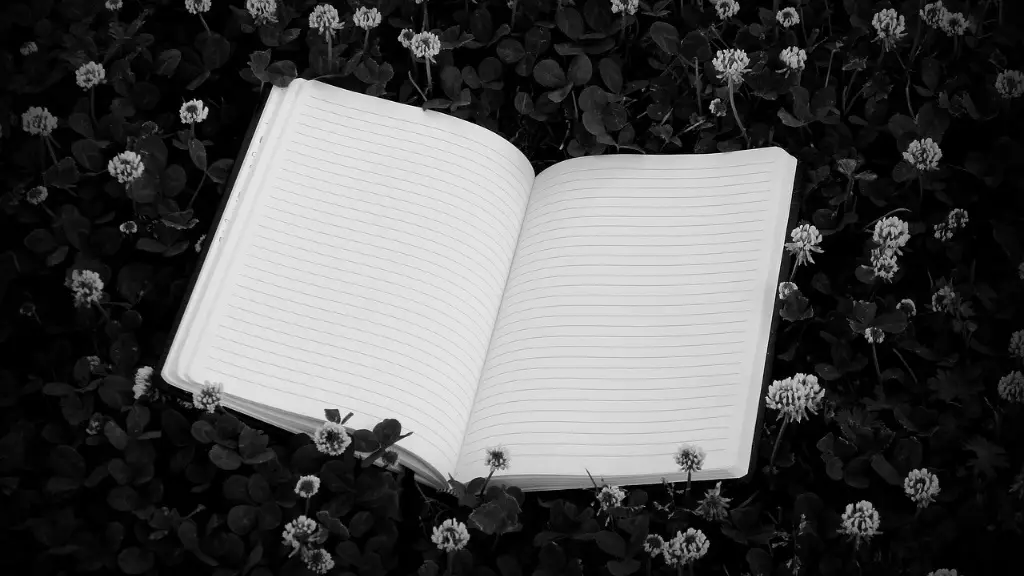What is the Difference Between Tone and Mood in Poetry?
Tone and mood are two different yet similarly intertwined elements of a poem often found intertwined or confused with one another. Tone is the attitude a poet conveys in a poem and is most often used to evoke emotion in the reader. The poem’s tone may be positive, serious, playful, romantic, or lighthearted, among others. Mood, on the other hand, is the atmosphere of the poem that speaks to a reader’s emotions. Whereas tone is direct and clear, mood is more indirect and ambiguous. In order for readers to understand the overall message of a poem and the emotions being evoked, they must first recognize the difference between the two.
At first glance, it may seem that these two elements are merely different words for the same idea – feelings in a poem. However, this is not the case. Generally, tone and mood create a poem’s atmosphere, but they are distinct in the way they are conveyed. Tone relates to the author’s attitude toward the subject or the reader, while mood is derived from the atmosphere in the writer’s construction of the poem. Tone is the author’s attitude, and mood is a feeling that readers get when they read the poem. Tone is how the author feels about the subject, while mood is the emotion the poem evokes in its readers.
The tone and mood of a poem are often created by the poetic techniques used in its composition. Tone is generated through word choice and the attitude it conveys – for instance, is the writer angry, sad, or content? The use of irony in a poem can be used to convey a sarcastic tone, whereas the use of appositives can emphasize a positive attitude. Similarly, the poem’s structure is influential in creating its mood as well. For example, a poem’s rhythm might evoke a lively and energetic mood, while wide spacing of words in lines might convey a slower, more relaxed mood.
In addition, poets often employ language and imagery to convey their tone and mood in their work. Imagery – the use of figures of speech, visual motifs, and other evocative devices – is an effective way to explain an emotion or attitude, as it forces the readers to use their imagination and interpret the author’s words for themselves. Through careful selection of words, metre, and theme, poets have the power to manipulate their readers’ emotions. An author might use precise word choices to highlight an idea and emphasize it to create a feeling of anger, fear, elation, or indecision.
The combination of tone and mood allows readers to comprehend a poem without necessarily knowing the author’s purpose or the exact words used in a line. With this knowledge, readers can form a better connection to a poet’s work and derive a better understanding of the poem’s overall meaning. In this way, tone and mood can be seen as two sides of the same coin, both influencing the reader’s interpretation of the same work.
The Different Levels of Tone and Mood
Tone and mood are by no means static concepts; they can span a range of emotions and can take on many different forms. For instance, a poem may have a cheerful and positive tone in its overall narration, yet can also contain sad and melancholic moods throughout its lines. Similarly, a poem can have a somber and serious underlying message, yet the tone of the poem can simultaneously be humorous and lighthearted.
The same poem may even express multiple tones across its various verses. This is why it is important to pay attention to the author’s attitude when interpreting a poem and understanding its mood. Oftentimes, the poet’s underlying message will be clearer when one takes into consideration the tone and mood in addition to the poem’s subject.
The relationship between a poem’s tone and mood can be further examined by looking at how they are layered together. At the most basic level, readers can determine the overall mood of a poem by its dominant tone. For example, a poem may feel happy in its entirety due to its overall cheerful tone, yet the poem may contain occasional hints of sadness due to its underlying mood. In this manner, readers can explore the power of the words that the author used in a poem to create the mood.
At a more intricate level, a poem’s tone and mood can interact in complex and interesting ways. For example, a poem may be written in a serious tone, yet through its brilliant imagery, the poem can express subtle emotions. This is why it is important to consider both tones and moods in a poem in order to get a better understanding of the message the author is conveying.
The Impact of Tone and Mood on Poetry
Tone and mood are both essential components of a poem, as they shape the overall atmosphere that a reader experiences when reading a poem. Tone and mood have the power to sway readers’ emotional responses, helping them to perceive the ideas being conveyed in the poem. For instance, a poem with a happy tone may make readers more likely to view its message as positive, while a poem with a darker tone can shift readers’ attention to the poem’s grim subject matter.
Poets, too, rely on tone and mood to express their ideas and feelings in writing. Poets use tone and mood to build an emotional connection with their readers and evoke various emotions in them. This is why many poets are so adept at conveying a range of emotions – they are able to tap into the tone and mood of their works to evoke a response in their readers.
Tone and mood can also be used to create a certain atmosphere or ambience in poetry. For example, a poem that is full of vivid imagery can evoke a sense of serenity, whereas the use of dark or melancholic language can create a foreboding atmosphere. Through the use of tone and mood, poets are able to give their readers an immersive experience, drawing them into their work and making them feel connected to the poem’s message.
Sense and Emotion of Tone and Mood
In literature, there are five senses to which we can attribute our emotions: taste, touch, sight, smell, and sound. Tone and mood create a sense of these emotions within poetry, whether it is the taste of melancholy, the sound of joy, or the sight of fear. Oftentimes, the reader must rely on their own interpretation of the poem to determine what feelings the author is trying to evoke. This is because tone and mood can be subtle and can often be expressed in an indirect manner.
The selection of language, imagery, and poetic techniques is typically how an author conveys the sense and emotion of a poem’s tone and mood. Because a poem’s language can be subtle, readers need to pay attention to how these elements are used in order to understand the poem’s underlying meaning. By looking closely at an author’s use of language and imagery, readers can better determine the mood and tone of a poem.
In addition, tone and mood may not only be expressed through a poem’s words, but also through its overall structure. The length of each line, the spacing of words on the page, and the various pauses in a poem’s structure can all have an impact on the poem’s mood. By considering these elements, readers can get a better sense of the emotion that the poet intended to convey in their work.
The Use of Tone and Mood in Other Forms of Literature
Tone and mood are not only employed in poetry, but are also important elements in other forms of literature. A good author can subtly enhance the tone and mood of their work in order to intensify certain scenes or evoke certain emotions. For example, a thriller novel may use dark, mysterious imagery and setting to create suspense and tension in a scene, while a romantic novel may use light and airy language to emphasize its love story. Tone and mood can be used in any type of literature, as it is a powerful tool in the author’s toolbox.
Tone and mood can also be used in different media, such as film and television, in order to create a certain atmosphere or to influence the viewer’s reaction to the scene. For example, a horror film may employ low lighting and oppressive music in order to generate an atmosphere of tension, while an emotional drama may use warm colors and soft music to emphasize its tender storyline. By understanding the impact of tone and mood on literature and media, readers can better comprehend an author’s message.
The Significance of Tone and Mood
Tone and mood are fundamental elements in any type of literature and media, as they inform readers’ interpretations of the author’s message. Through a careful selection of language, imagery, and poetic techniques, authors have the power to evoke a range of emotions in their readers. Whether a poem is written in a happy tone or a serious mood, the poem’s message can often be best understood through understanding the feelings the author is trying to convey.
At its heart, the impact of tone and mood in literature is rooted in the idea that words have the power to evoke emotions in readers. Through the intentional use of words, poets and authors can stimulate our imaginations and take us on an emotional journey. Thus, it is important for readers to pay attention to the relationship between tone and mood in order to appreciate the full impact of a poem.




